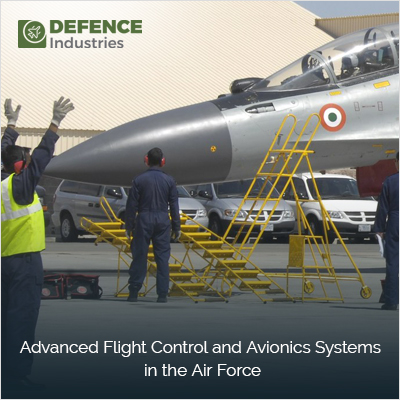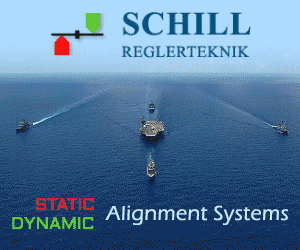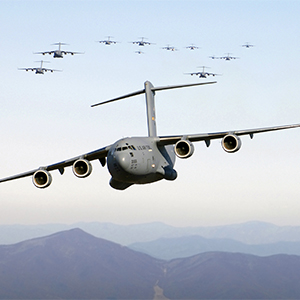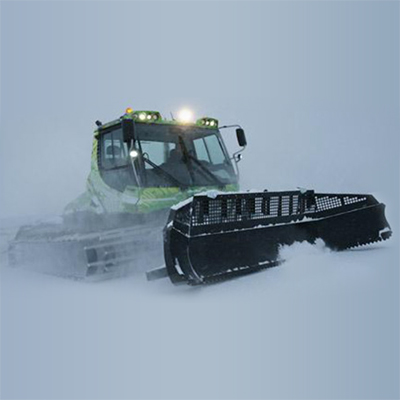Advanced Flight Control and Avionics Systems in the Air Force

In the modern era of aviation, advanced flight control and avionics systems play a critical role in the Air Force's mission success. These sophisticated technological advancements have revolutionized the way aircraft operate, enhancing their efficiency, safety, and overall performance. From state-of-the-art autopilot systems to highly accurate navigation tools, these advanced systems ensure precise control of the aircraft, allowing pilots to focus on their missions.
Evolution of flight control and avionics systems in the Air Force
Over the years, flight control and avionics systems have undergone significant evolution in the Air Force. The early days of aviation relied on manual controls and simple instruments, making flying a highly challenging and risky endeavor. As technology progressed, the Air Force recognized the need for more advanced systems to enhance the capabilities of their aircraft and improve operational efficiency.
With the advent of computers and digital technology, flight control systems have become increasingly sophisticated. Today, advanced flight control systems integrate numerous sensors, actuators, and computer algorithms to provide pilots with precise control over their aircraft. These systems are designed to optimize performance, enhance situational awareness, and improve overall flight safety.
Similarly, avionics systems have also seen remarkable advancements. Avionics, short for aviation electronics, encompasses various electronic systems used in aircraft, including communication, navigation, and display systems. The Air Force has embraced cutting-edge avionics technologies, such as GPS navigation systems, advanced radar systems, and data link communication, to ensure efficient and effective operations.
The importance of advanced flight control and avionics systems
The adoption of advanced flight control and avionics systems in the Air Force comes with numerous benefits and advantages. These systems not only improve the functionality of the aircraft but also enhance the efficiency and safety of its operations.
One of the key advantages of advanced flight control systems is their ability to automate certain flight operations. Autopilot systems, for example, can relieve pilots of the burden of manually controlling the aircraft, allowing them to focus on mission-related tasks. This automation not only reduces pilot workload but also minimizes the chances of human error, leading to safer and more reliable flights.
Additionally, advanced flight control systems provide pilots with real-time data feedback and intuitive interfaces, enabling them to make informed decisions quickly. With accurate and up-to-date information, pilots can respond effectively to changing scenarios and navigate through complex environments with ease. The integration of advanced navigation tools also allows for precise route planning, minimizing fuel consumption and optimizing flight efficiency.
Key components of advanced flight control systems
Advanced flight control systems consist of several key components that work together to ensure precise control and maneuverability of the aircraft. These components include fly-by-wire systems, flight management systems, and autothrottle systems.
Fly-by-wire systems, a cornerstone of modern flight control technology, replace traditional mechanical linkages with electronic signals. This technology allows for more precise control of the aircraft, eliminates control surface imbalances, and enhances stability. By translating pilot inputs into electronic signals, fly-by-wire systems provide a seamless and responsive flight experience.
Flight management systems (FMS) integrate navigation, performance, and guidance functions into a single system. FMS utilizes GPS data, along with other sensors, to calculate optimal flight paths, monitor fuel consumption, and manage aircraft systems. These systems enable pilots to plan and execute flights efficiently while adhering to airspace restrictions and regulations.
Autothrottle systems, also known as automatic thrust control systems, monitor and adjust the aircraft's engine power to maintain a desired airspeed. By automatically adjusting thrust levels, autothrottle systems ensure smooth and precise control of the aircraft, particularly during critical phases of flight, such as takeoff and landing.
Key components of avionics systems in the Air Force
Avionics systems encompass a wide range of electronic systems used in aircraft, each serving a specific purpose. These systems include communication, navigation, surveillance, and display systems.
Communication systems enable pilots to communicate with air traffic control, other aircraft, and ground personnel. The Air Force utilizes advanced data link communication systems, such as Link 16, to facilitate secure and efficient communication between aircraft and ground stations. These systems enhance situational awareness, improve coordination, and enable real-time exchange of critical information.
Navigation systems play a crucial role in ensuring accurate and reliable aircraft positioning. The Air Force employs advanced GPS navigation systems that provide precise position
information, enabling pilots to navigate through complex airspace and follow designated flight paths. These systems also incorporate terrain mapping tools, allowing pilots to avoid hazardous terrain and navigate safely in all weather conditions.
Surveillance systems, including radar and sensor technologies, enable the Air Force to monitor airspace and detect potential threats. Advanced radar systems provide real-time information on nearby aircraft, weather conditions, and other relevant data, allowing pilots to make informed decisions and respond promptly to any potential risks.
Display systems, such as multifunction displays and head-up displays, present critical flight information to pilots in a clear and intuitive manner. These systems consolidate essential data, such as altitude, airspeed, and navigation information, into a single display, reducing the need for pilots to scan multiple instruments. This integration enhances situational awareness and reduces pilot workload.
Benefits and advantages of advanced flight control and avionics systems
The integration of advanced flight control and avionics systems offers numerous benefits to the Air Force and its pilots. These systems enhance aircraft performance, improve safety, and increase operational efficiency.
One of the key advantages is the ability to optimize aircraft performance through advanced control algorithms. Flight control systems can automatically adjust control surfaces, engine thrust, and other parameters to maximize aircraft efficiency and minimize fuel consumption. This optimization leads to cost savings, longer mission endurance, and reduced environmental impact.
Advanced flight control systems also contribute to increased flight safety. These systems incorporate collision avoidance technologies, such as Traffic Alert and Collision Avoidance Systems (TCAS) and Automatic Dependent Surveillance-Broadcast (ADS-B), which provide pilots with real-time information about nearby aircraft. This proactive approach to safety reduces the risk of mid-air collisions and enhances overall airspace safety.
Furthermore, avionics systems improve operational efficiency by streamlining communication and navigation processes. Advanced data link communication systems enable seamless coordination between aircraft, ground stations, and other assets involved in a mission. This improved communication facilitates faster decision-making, enhances mission effectiveness, and enables better coordination among pilots and ground personnel.
Challenges and limitations of advanced flight control and avionics systems
While advanced flight control and avionics systems offer significant advantages, they also come with their own set of challenges and limitations. These include the complexity of the systems, potential vulnerabilities to cyber threats, and the need for continuous training and maintenance.
The complexity of advanced systems requires highly skilled personnel to operate and maintain them. Pilots and ground crews must undergo extensive training to familiarize themselves with the systems' functionalities and capabilities. Additionally, continuous training is essential to keep up with the rapid advancements in technology and ensure optimal utilization of the systems.
Another challenge is the potential vulnerability of advanced systems to cyber threats. As aircraft become more connected and rely on digital communication and navigation systems, they become susceptible to hacking and unauthorized access. The Air Force must invest in robust cybersecurity measures to protect these systems from potential attacks and ensure the integrity and confidentiality of critical data.
Maintenance and support are also crucial aspects of operating advanced flight control and avionics systems. Regular inspections, repairs, and software updates are necessary to ensure the systems' reliability and performance. The Air Force must have a well-established maintenance program, supported by skilled technicians and adequate resources, to minimize downtime and maximize operational readiness.
Training and education for operating and maintaining advanced systems
The successful operation and maintenance of advanced flight control and avionics systems require comprehensive training and education programs. The Air Force invests in rigorous training to equip pilots and ground crews with the necessary skills and knowledge to operate and maintain these systems effectively.
Pilots undergo specialized training programs that include simulator sessions and hands-on experience with advanced flight control systems. These programs focus on familiarizing pilots with the system's interfaces, functionalities, and emergency procedures. Simulated scenarios allow pilots to practice handling various situations, ensuring they are prepared for real-world operations.
Similarly, ground crews receive training on avionics systems, including installation, troubleshooting, and routine maintenance. These training programs ensure that technicians are proficient in diagnosing and repairing system faults, conducting inspections, and updating software. Ongoing education and refresher courses enable technicians to stay up-to-date with the latest advancements and best practices in system maintenance.
Additionally, the Air Force collaborates with industry partners and academic institutions to provide specialized courses and certifications in flight control and avionics systems. These programs offer in-depth knowledge and practical skills, allowing personnel to become subject matter experts in their respective areas.
Future developments in flight control and avionics systems
As technology continues to advance, the Air Force remains committed to staying at the forefront of flight control and avionics systems. The future holds exciting possibilities for further enhancements and innovations in these areas.
One area of development is the integration of artificial intelligence (AI) and machine learning algorithms into flight control systems. AI-powered systems can analyze vast amounts of data in real-time, enabling proactive decision-making and adaptive control. These systems can optimize aircraft performance, predict maintenance needs, and enhance overall operational efficiency.
Another area of focus is the development of advanced sensor technologies. New sensor technologies, such as synthetic vision systems and enhanced weather radar, can provide pilots with even more accurate and detailed information about their surroundings. These advancements will further improve situational awareness and enable pilots to make better-informed decisions.
Furthermore, the Air Force is exploring the use of unmanned aircraft systems (UAS) in various
missions. UAS, also known as drones, rely heavily on advanced flight control and avionics systems to operate autonomously. The Air Force is investing in research and development to enhance the capabilities of UAS, enabling them to perform complex missions and support manned aircraft operations.
Conclusion
Advanced flight control and avionics systems have revolutionized the way the Air Force operates its aircraft. These sophisticated systems enhance aircraft performance, improve safety, and increase operational efficiency. From fly-by-wire systems to advanced navigation tools, the integration of these technologies has significantly improved the Air Force's capabilities and positioned it as a leader in aviation technology.
As technology continues to evolve, the Air Force remains committed to investing in cutting-edge flight control and avionics systems. By embracing advancements in AI, sensor technologies, and unmanned aircraft systems, the Air Force is prepared to meet the challenges of the future head-on. These advancements will further enhance the Air Force's operational effectiveness, ensuring its ability to carry out critical missions with precision and safety.









